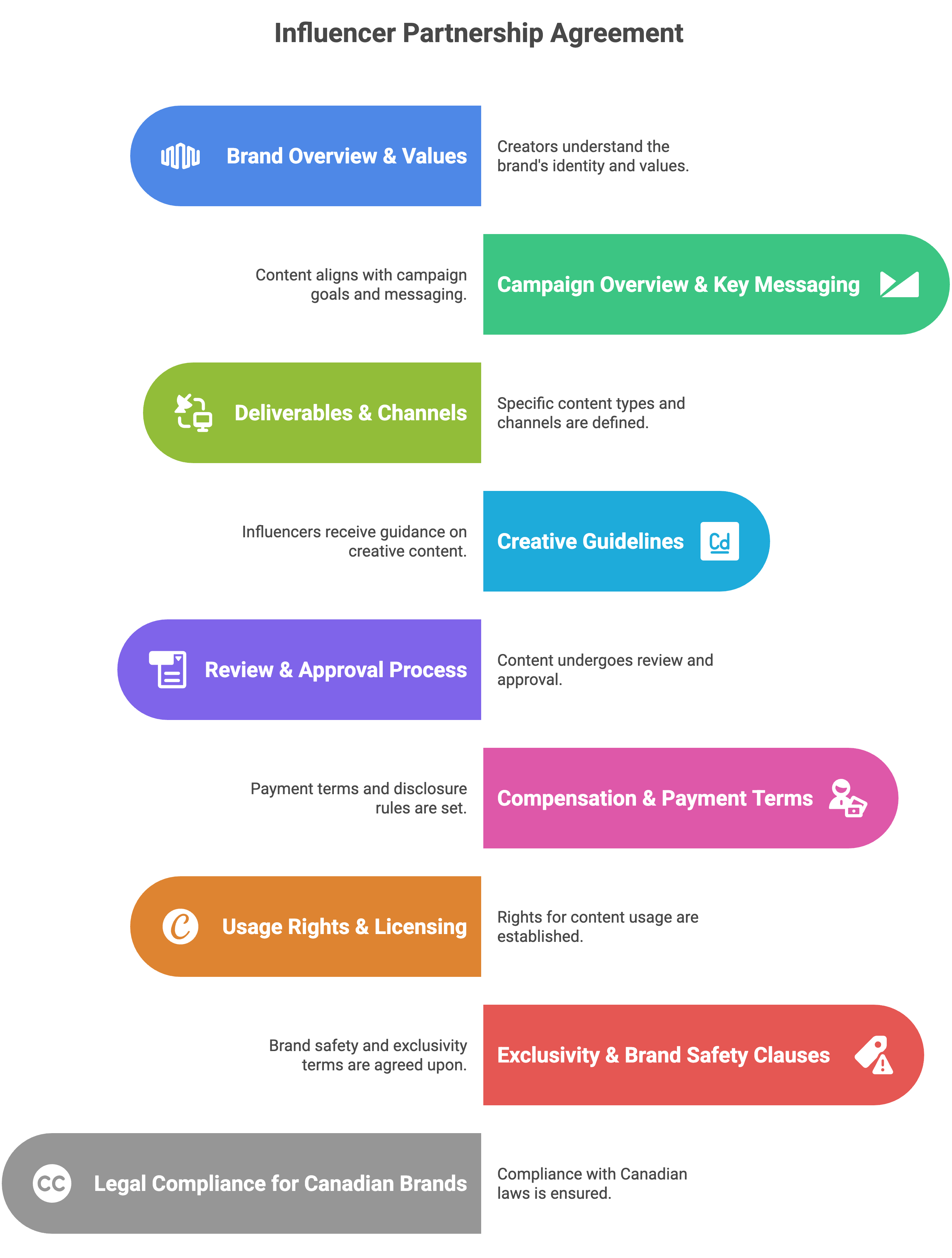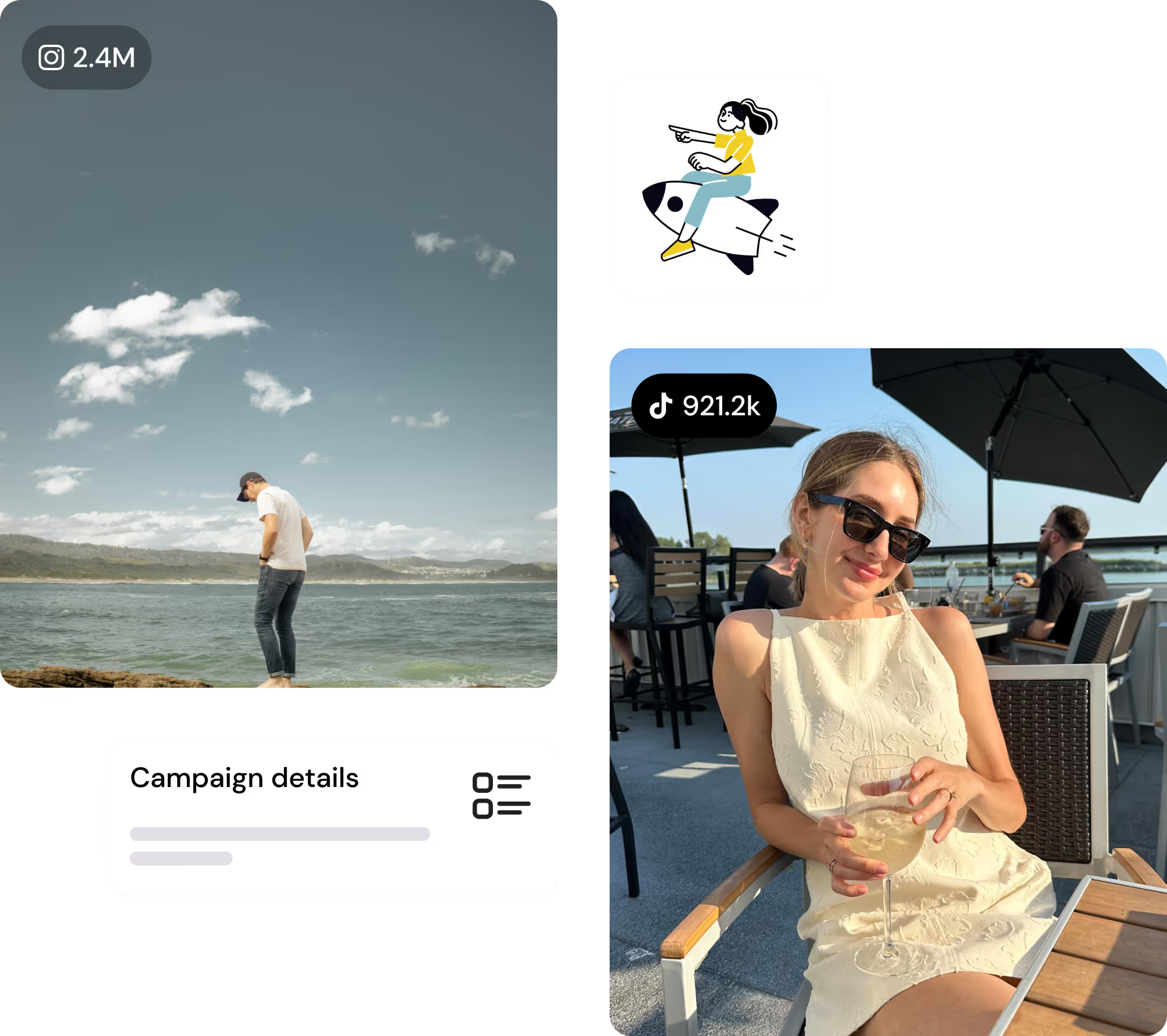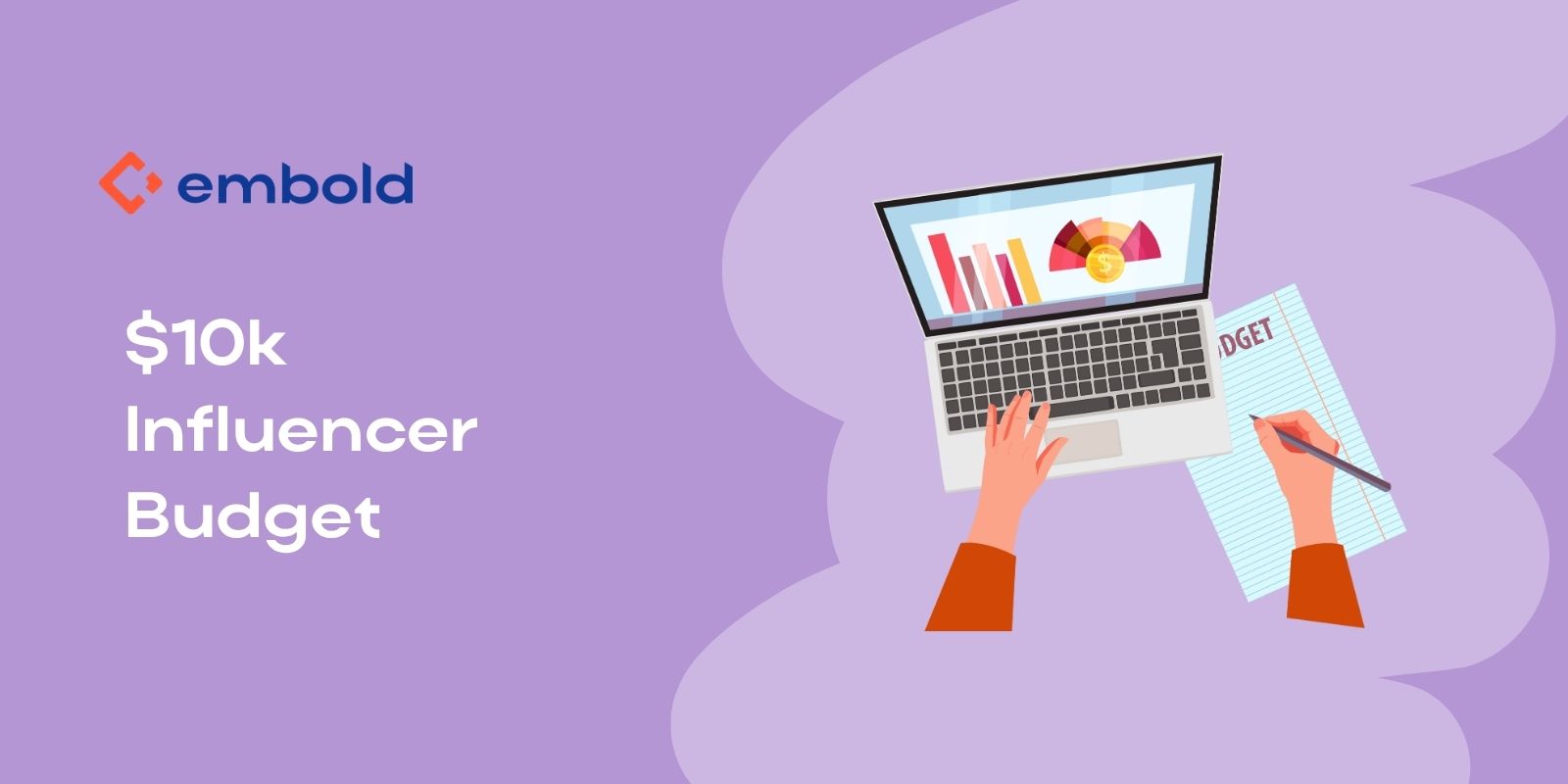
What to Include in an Influencer Partnership Agreement

Influencer marketing is no longer experimental; it’s a key part of the modern marketing mix for Canadian brands. But behind every successful campaign is a clear, well-structured influencer agreement.
Without one, brands open themselves up to reputational risk, compliance issues, and messy disputes. A great influencer agreement isn’t just a legal necessity; it’s a roadmap for a smooth, high-impact partnership.
This guide breaks down everything Canadian brands and agencies need to include in their influencer agreements. Whether you’re running campaigns in-house or through a partner like Embold, these components help protect your brand, keep creators aligned, and drive better results.
Why Influencer Agreements Matter in Canada
Influencer marketing in Canada is governed by a unique regulatory landscape. Between the Competition Bureau, Ad Standards Canada, and provincial laws like Quebec’s Consumer Protection Act, brands aren’t just encouraged to follow the rules, they're legally obligated.
And here's the kicker: even if the influencer is the one making the mistake, the brand is still ultimately responsible.
A strong agreement:
- Sets clear expectations from the start
- Protects your brand's image and legal standing
- Helps ensure content is on-brand, compliant, and effective
- Builds trust with influencers by clarifying deliverables and payment
Let’s dive into what your influencer partnership agreement should include:

1. Brand Overview & Values
Why it matters: Creators need to know who they’re working with to tell your story authentically.
What to include:
- A short introduction to your brand and product
- Your mission, tone of voice, and core values
- Details about your target audience (age, region, interests, etc.)
Canadian influencers perform best when they can connect your brand to their own values and audience. Sharing context upfront leads to more aligned, compelling content.
2. Campaign Overview & Key Messaging
Why it matters: This keeps content on-message while still feeling organic.
What to include:
- Campaign name and purpose (e.g., product launch, brand awareness)
- Specific goals (e.g., increase traffic, boost conversions, grow reach)
- Key messaging points or brand claims (e.g., made in Canada, cruelty-free)
- Themes, hashtags, discount codes, or URLs to be used
The more guidance you offer, the more confidently influencers can build content that resonates.
3. Deliverables & Channels
Why it matters: Vague asks lead to vague content. Specificity sets everyone up for success.
What to include:
- Exact content types (e.g., 1 Instagram Reel, 3 TikTok videos, 1 blog post)
- Where the content will live (Instagram, TikTok, YouTube, LinkedIn, etc.)
- Timeline for delivery and posting dates
- Rights and permissions for repurposing (e.g., paid ads, email, website)
If you plan to reuse influencer content beyond organic posting, make sure this is clearly stated in your agreements. At Embold, we help brands negotiate content rights and structure licensing terms upfront. If you or your clients are new to influencer marketing, this blog outlines why micro-influencers are often the best place to start.
4. Creative Guidelines
Why it matters: Balance is key - give direction, not a script.
What to include:
- Messaging do’s (value props, tone, product info to include)
- Messaging don’ts (prohibited claims, visuals, competitor mentions)
- Brand style references (colours, vibe, sample content)
- Past examples that worked well
You want content that feels authentic to the influencer, not like an ad read. Creative briefs should guide, not control. At Embold, we encourage brands to collaborate with creators on these elements, some of the best-performing content comes from co-creation.
5. Review & Approval Process
Why it matters: Clear timelines avoid last-minute stress.
What to include:
- When drafts are due for review
- How feedback will be delivered (e.g., via Google Docs, platform upload)
- How many rounds of edits are included
- Who makes final approval decisions
Fast-moving campaigns need fast-moving feedback loops. Embold’s content portal makes this easy with built-in approvals and brand-safe review workflows.
6. Compensation & Payment Terms
Why it matters: Transparency upfront = fewer headaches later.
What to include:
- Compensation model (flat fee, performance-based, hybrid, gifting)
- Payment method and currency (e.g., CAD via bank transfer)
- Payment schedule
- Invoice instructions (who to invoice, when, how)
- Disclosure rules (#ad, #sponsored, etc.)
Canadian law requires all material connections to be disclosed clearly and visibly. Just using Instagram’s “Paid Partnership” tag isn’t enough. This must be written into your agreement.
7. Usage Rights & Licensing
Why it matters: If you’re paying for content, make sure you can use it.
What to include:
- Who owns the content (brand or influencer)
- How and where the brand can use it (organic, paid, print, email, etc.)
- Duration and geography of rights (e.g., 6 months, North America)
- Whether you can modify or adapt content (e.g., for ads or different channels)
Canadian brands are increasingly repurposing influencer content across owned and paid channels. We often recommend negotiating broad usage rights up front, it’s more cost-effective than going back later.
8. Exclusivity & Brand Safety Clauses
Why it matters: Protects your brand image and reduces competitive overlap.
What to include:
- Any exclusivity terms (e.g., can’t promote direct competitors for 30 days)
- Morality clause: agreement to maintain behaviour aligned with your brand’s values
- Removal protocol if something goes sideways (e.g., influencer scandal)
The influencer’s actions reflect on your brand, both during and after the campaign. Clear exit terms and reputational safeguards are critical.
9. Legal Compliance for Canadian Brands
Why it matters: Non-compliance can cost you, literally.
In Canada, influencer marketing must comply with laws and guidelines from:
- Competition Bureau (enforces disclosure of material connections)
- Ad Standards Canada (sets advertising standards)
- Office de la protection du consommateur (Quebec) for campaigns in Quebec
Penalties can reach $15 million for corporations in repeated offences. Even if your influencer makes the mistake, you’re liable if you haven’t provided clear instructions and oversight.
That’s why Embold builds compliance into every step, from content briefs to post monitoring, so brands don’t have to worry.
Influencer Agreement Checklist
Here’s a quick breakdown of what to include:
Section: Key Elements:
Brand Info Who you are, values, target audience
Campaign Overview Objectives, messaging, hashtags
Deliverables Content types, platforms, timelines
Creative Guidelines Tone, do’s/don’ts, brand visuals
Review Process Draft deadlines, approvals
Compensation Fee, method, timing, disclosures
Content Rights Ownership, usage, licensing terms
Exclusivity Competitor restrictions, morality clause
Compliance Disclosure guidance, monitoring
Final Thoughts
A clear, thorough influencer agreement helps avoid confusion, builds trust with creators, and protects your brand legally and reputationally, especially in the Canadian market.
Whether you’re working with one creator or building an always-on influencer strategy, this document is a critical foundation for success.
If you’re a Canadian brand looking to scale your influencer marketing, get in touch with Embold today. From campaign planning to contract management to compliance, we’ve got you covered.

The all-in-one creator marketing platform built for Canadian brands
Plan, launch, and measure all your creator campaigns from one place.
.jpg)



